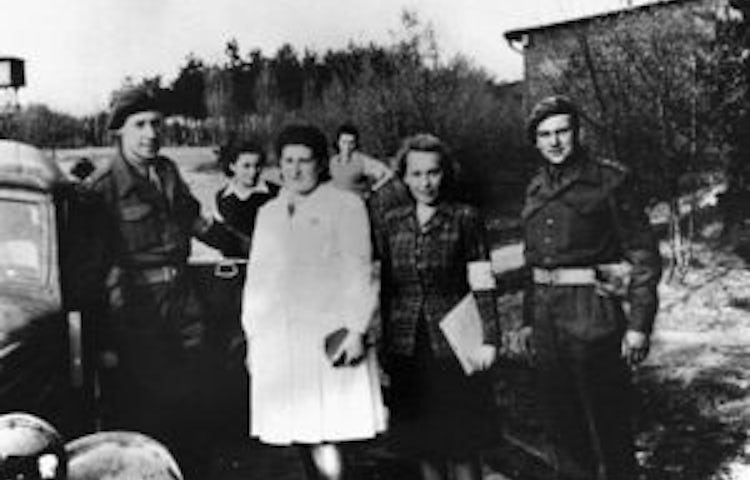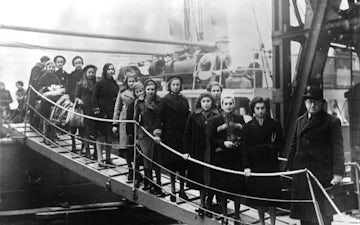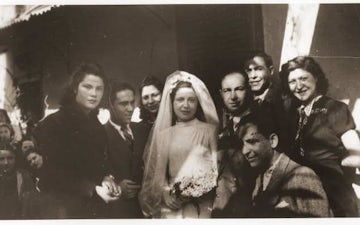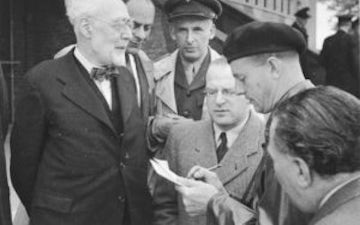
Survivors pose with British soldiers soon after the liberation of Bergen-Belsen. Among those pictured is Hadassah Bimko (second from the left), Captain Winterbottom, and Dr. Ruth Gutman (1945 April 15). Photo Credit: United States Holocaust Memorial Museum, courtesy of Hadassah Bimko Rosensaft
In December of 1944, 49 Dutch Jewish children, whose parents had been deported elsewhere, were left outside one of the women’s barracks in the concentration camp of Bergen-Belsen in Germany. A group of women inmates took the children inside, and decided to care for them.
Led by a Jewish dentist from Poland, Dr. Hadassah (Ada) Bimko (later Rosensaft), they established a children’s home in two of the barracks where they gathered additional children from different countries. Despite overcrowding, starvation, horrific hygienic conditions, and a raging typhoid epidemic, the women kept 149 Jewish children alive through the harsh winter of 1944-45 until Bergen-Belsen was liberated on April 15, 1945.




